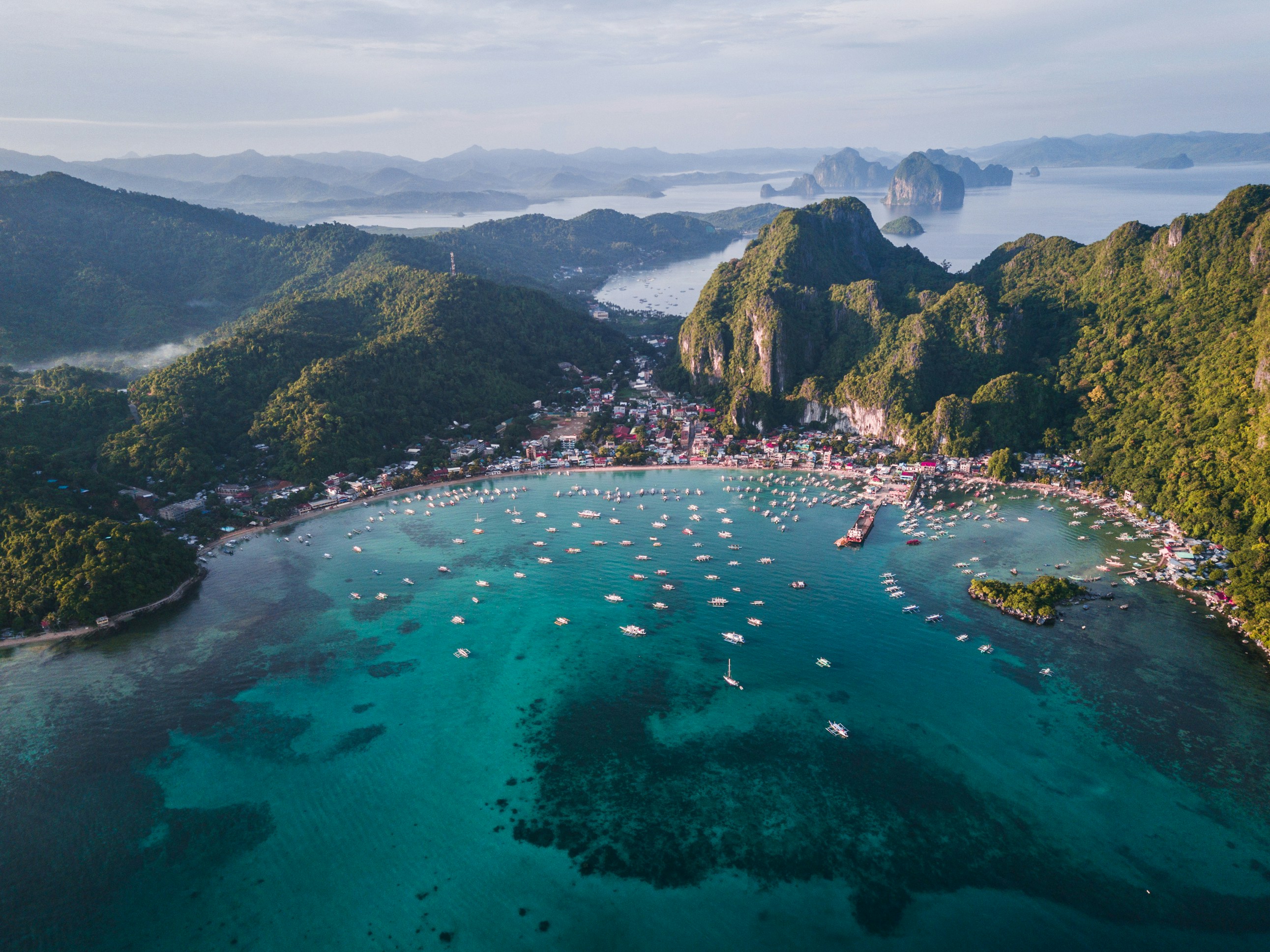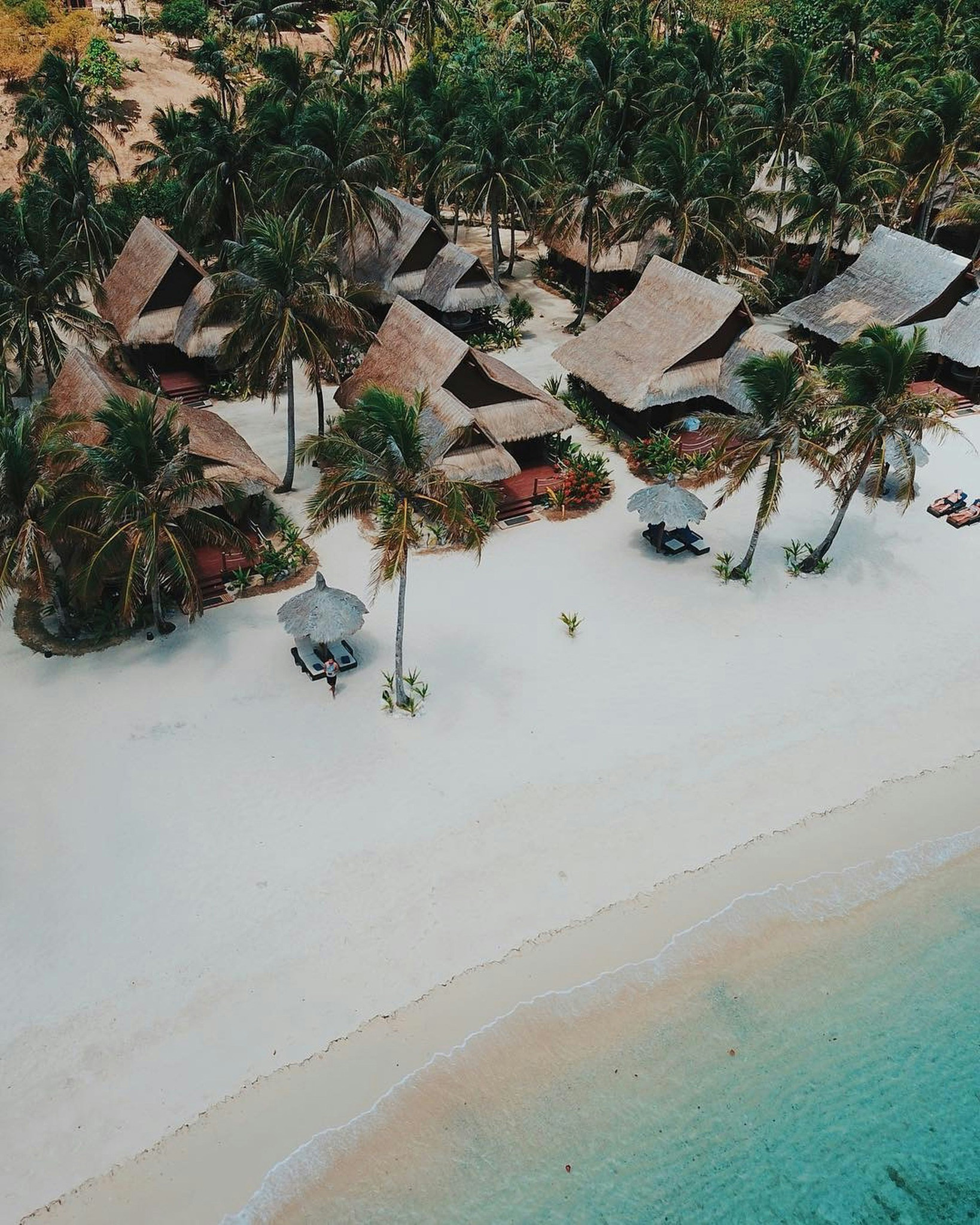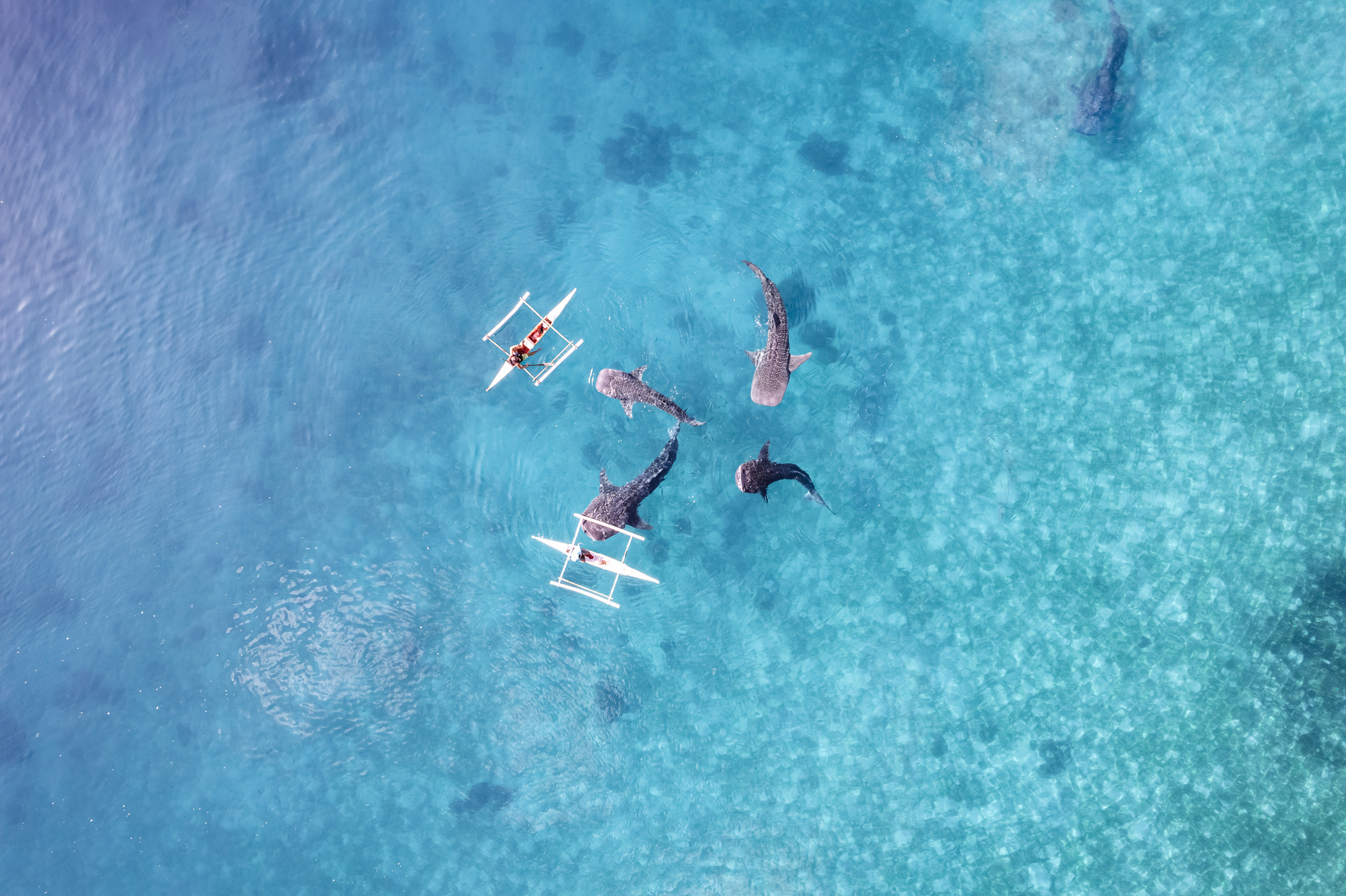The Philippines – Destination Guide
The Philippines is a tropical paradise of over 7,600 islands, where emerald rice terraces meet palm-fringed beaches and vibrant coral reefs. Famous for its friendly locals, diverse cultures, and breathtaking natural beauty, the Philippines offers an endless mix of island-hopping, diving, hiking, and cultural immersion. Whether you’re chasing adventure, relaxation, or unforgettable sunsets, this Southeast Asian gem is one of the world’s most rewarding travel destinations.

🏝️ Regions to Explore
🌴 Luzon
- Home to Manila, the bustling capital filled with history and modern energy
- Visit the UNESCO-listed Banaue and Batad rice terraces
- Explore Vigan’s preserved Spanish colonial streets
🌊 Visayas
- Stunning beaches and dive sites in Cebu and Bohol
- Chocolate Hills and tarsiers in Bohol
- Party and paradise vibes in Boracay
🐠 Mindanao
- Rich cultural diversity and Indigenous traditions
- Trekking at Mount Apo, the country’s highest peak
- Davao’s markets and natural parks
🏖️ Palawan
- Often called the “last frontier” of the Philippines
- El Nido and Coron for limestone cliffs, lagoons, and wreck diving
- Puerto Princesa’s Underground River, a UNESCO World Heritage site

🍽️ Food & Drink
Filipino cuisine is a fusion of Indigenous, Spanish, Chinese, and American influences.
- Adobo – chicken or pork braised in vinegar, soy sauce, and garlic
- Sinigang – sour tamarind-based soup with vegetables and meat or seafood
- Lechon – whole roasted pig, a festive favourite
- Halo-halo – colourful shaved ice dessert with fruits, beans, and milk
- San Miguel beer and local rum are popular drinks
🎎 Culture & Etiquette
- Family and community are central to Filipino life
- Respect elders with polite greetings like “po” and “opo”
- Casual dress is fine, but modest clothing is appreciated when visiting churches or rural areas
- Smiles and friendliness go a long way – Filipinos are famously hospitable

🚌 Getting There & Around
✈️ International Airports
- Ninoy Aquino International Airport (MNL) – Manila
- Mactan-Cebu International Airport (CEB) – Cebu
- Clark International Airport (CRK) – Angeles City (alternative to Manila)
- Francisco Bangoy International Airport (DVO) – Davao
🚐 Getting Around
- Domestic flights – essential for covering large distances between islands
- Ferries – connect major islands like Luzon, Visayas, and Mindanao
- Jeepneys – colourful shared minibuses, the most iconic mode of transport
- Tricycles & motorbikes – common for short distances
- Private vans and buses – useful for longer land journeys
🛡️ Safety
- The Philippines is generally safe for travellers, but take normal precautions
- Petty theft can occur in busy urban areas
- LGBTQIA+ travellers are generally welcomed in urban and tourist areas, though some rural regions may be more conservative

💡 Practical Info
- Currency – Philippine Peso (PHP)
- Language – Filipino (Tagalog) and English are widely spoken
- Electricity – 220V, plugs Type A, B, and C (bring a universal adapter)
- Internet – Variable; strong in cities, patchy in remote islands
- Water – Tap water isn’t safe to drink – stick to bottled or filtered water
- Vaccinations – Hepatitis A, Typhoid, and routine shots recommended
- Travel Insurance – Essential for health, theft, and flight changes
- Connectivity – eSIMs or local SIM cards (Globe and Smart are the main providers) available at airports and malls. Using an eSIM is our recommended choice while travelling anywhere in the world, and our recommended provider is Holafly. For more information on eSIMs, check out this blog.
Visa-Free / Visa on Arrival
- Many nationalities can enter the Philippines for tourism or business visa-free for up to 30 days.
- Your passport must generally be valid for at least 6 months beyond your intended stay.
- You also need to have a return or onward ticket (i.e. proof that you will leave) when entering via visa-free entry.
- More information can be found via your home country’s embassy or travel information website, or by visiting https://e-services.immigration.gov.ph/
🎒 Packing Guide
The Philippines’ tropical climate means hot days, humid conditions, and sudden rain showers. Pack light, breathable clothing and essentials for beach, city, and adventure.
👕 Clothing
- Lightweight cotton or linen shirts
- Shorts, skirts, and sundresses
- Swimsuits and cover-ups
- Sarong or quick-dry beach towel
- Light jacket or hoodie for cooler evenings or air-conditioned buses
- Rain jacket or poncho (especially June–Nov)
- Modest outfit for church or rural visits
🥿 Footwear
- Comfortable walking shoes or trainers
- Flip-flops or sandals for the beach
- Reef shoes or water sandals for rocky shores and island hopping
🧴 Toiletries & Health
- Reef-safe sunscreen
- Mosquito repellent
- After-sun aloe gel
- Personal medications and a small first-aid kit
- Hand sanitiser and wet wipes
📸 Travel Gear
- Dry bag for boat trips
- Snorkel gear (optional, but many rentals are available)
- Reusable water bottle with filter
- Travel adapter and power bank
- Lightweight daypack
- Camera or GoPro for underwater shots
📄 Documents & Essentials
- Passport with at least 6 months’ validity
- Travel insurance documents
- Credit/debit cards plus some cash in pesos
- Copies of important documents stored digitally
☀️ Best Time to Visit
The Philippines has a tropical climate with two main seasons:
- Dry Season (December – May) – The most popular time to visit, especially for island-hopping, beaches, and festivals like Sinulog in Cebu (January) and Ati-Atihan in Kalibo (January). March to May is the hottest period, perfect for diving and water activities.
- Wet Season (June – November) – Characterised by heavy rains and sometimes typhoons, but you’ll find fewer crowds and lower prices. Many areas, especially Palawan and Mindanao, can still be very pleasant.
- Peak Travel Months – December, January, and Easter (Holy Week) when locals and international travellers flock to popular destinations. Book accommodation and flights well in advance.
🌟 Why Visit
The Philippines is the perfect mix of adventure and relaxation. Whether you’re hiking emerald rice terraces, diving into colourful coral reefs, or lounging on world-class beaches, each island offers something unique. With its warm hospitality, rich cultural traditions, and jaw-dropping natural landscapes, the Philippines isn’t just a place to visit – it’s a destination you’ll want to return to again and again.


